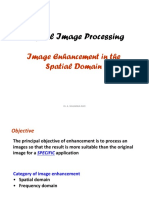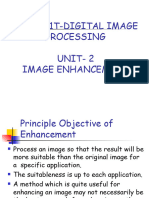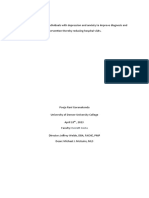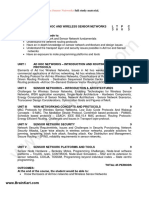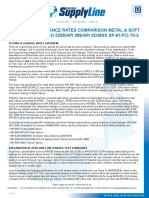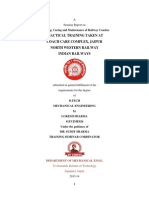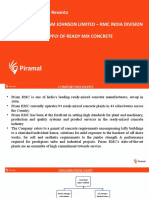0% found this document useful (0 votes)
19 views55 pagesDIP Image Enhancement
The document discusses various image enhancement techniques in digital image processing, focusing on methods in the spatial and frequency domains. It details intensity transformation functions such as logarithmic and power-law transformations, as well as contrast stretching and histogram processing. The document also covers histogram equalization, emphasizing its role in improving image quality by redistributing intensity levels to achieve a uniform probability density function.
Uploaded by
akash.bcetgenaiCopyright
© © All Rights Reserved
We take content rights seriously. If you suspect this is your content, claim it here.
Available Formats
Download as PPTX, PDF, TXT or read online on Scribd
0% found this document useful (0 votes)
19 views55 pagesDIP Image Enhancement
The document discusses various image enhancement techniques in digital image processing, focusing on methods in the spatial and frequency domains. It details intensity transformation functions such as logarithmic and power-law transformations, as well as contrast stretching and histogram processing. The document also covers histogram equalization, emphasizing its role in improving image quality by redistributing intensity levels to achieve a uniform probability density function.
Uploaded by
akash.bcetgenaiCopyright
© © All Rights Reserved
We take content rights seriously. If you suspect this is your content, claim it here.
Available Formats
Download as PPTX, PDF, TXT or read online on Scribd
/ 55




























